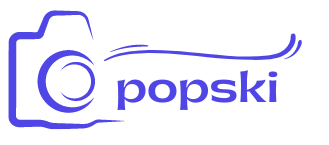In today’s fast-paced digital environment, efficient IT help desk services and end-user management are crucial for ensuring smooth operations and maximizing productivity within organizations. As businesses increasingly rely on technology to drive their day-to-day operations, the need for robust IT support and management solutions becomes more apparent. For businesses looking to streamline their IT help desk and end-user management processes, see how implementing effective strategies can enhance overall efficiency and user satisfaction to get see.
Functions of an IT Help Desk
The IT help desk serves as the frontline support for end-users, providing assistance with technical issues, troubleshooting, and guidance on IT systems and applications.
Ticket Management and Resolution
A crucial function of the IT help desk is managing support requests through ticketing systems.
Logging and Categorizing Support Requests
When a user encounters a technical issue, they submit a support request or ticket to the IT help desk, detailing the problem they are experiencing.
Prioritizing and Assigning Tickets
The IT help desk team prioritizes tickets based on urgency and impact, ensuring critical issues are addressed promptly.
Tracking and Resolving Issues in a Timely Manner
The help desk team tracks the progress of each ticket, from initial submission to resolution, ensuring that issues are resolved within agreed-upon service level agreements (SLAs).
Remote Assistance and Troubleshooting
With the increasing prevalence of remote work, providing remote assistance and troubleshooting has become essential for IT help desks.
Providing Remote Support for End-User Issues
Using remote desktop tools and software, IT technicians can connect to end-users’ devices remotely to diagnose and resolve technical problems.
Utilizing Remote Desktop Tools and Software
Remote desktop tools allow IT technicians to view and control end-users’ screens, troubleshoot software issues, and perform system configurations without the need for physical presence.
Resolving Technical Problems without On-Site Visits
Remote assistance enables IT help desk teams to resolve technical issues efficiently, minimizing downtime and disruptions for end-users.
User Training and Education
Empowering end-users with the knowledge and skills to troubleshoot common issues independently can help alleviate the burden on the IT help desk and improve overall user satisfaction.
Offering Training Sessions on IT Systems and Applications
The IT help desk provides training sessions and workshops to educate end-users on how to use IT systems and applications effectively.
Providing Documentation and How-To Guides
In addition to training sessions, the IT help desk creates documentation and how-to guides to help end-users troubleshoot common issues and perform routine tasks.
Empowering Users to Resolve Common Issues Independently
By providing end-users with the resources and guidance they need to troubleshoot common issues independently, the IT help desk can reduce the volume of support requests and improve overall efficiency.
Strategies for Effective End-User Management
End-user management encompasses processes and strategies for managing users’ access to IT systems and resources, optimizing their experience, and ensuring security and compliance.
User Onboarding and Offboarding Processes
Managing user accounts and access rights is essential for ensuring security and compliance within organizations.
Setting Up New User Accounts and Devices
When onboarding new employees, IT departments must provision user accounts, assign access rights, and set up devices and software to ensure they can perform their job responsibilities effectively.
Removing Access for Departing Employees
Similarly, when employees leave the organization, IT departments must revoke their access to IT systems and resources to prevent unauthorized access and potential security breaches.
Ensuring Security and Compliance in User Provisioning
Throughout the user onboarding and offboarding processes, IT departments must adhere to security policies and compliance regulations to protect sensitive data and maintain regulatory compliance.
User Experience Optimization
Optimizing the user experience is essential for enhancing productivity and user satisfaction within organizations.
Conducting User Surveys and Feedback Sessions
Gathering feedback from end-users through surveys and feedback sessions allows IT departments to identify areas for improvement and address user pain points effectively.
Addressing User Pain Points and Improving Processes
Based on user feedback, IT departments can implement changes and improvements to IT systems, processes, and policies to enhance the user experience and streamline workflows.
Implementing User-Centric Design Principles
Designing IT systems and interfaces with the end-user in mind ensures that they are intuitive, user-friendly, and meet the needs and preferences of end-users.
Proactive Communication and Support
Proactive communication and support are essential for keeping end-users informed about IT updates, changes, and support options.
Keeping Users Informed About System Updates and Changes
Communicating upcoming system updates, changes to IT policies, and new features or functionalities helps prepare end-users and minimize disruption to their workflow.
Providing Proactive Support and Maintenance
Offering proactive support and maintenance services allows IT departments to identify and address potential issues before they escalate into major problems, minimizing downtime and disruptions for end-users.
Establishing Communication Channels for Feedback and Support Requests
Creating channels for end-users to provide feedback and submit support requests ensures that IT departments can address their needs and concerns promptly and effectively.
Tools and Technologies for IT Help Desk and End-User Management
A wide range of tools and technologies are available to support IT help desk and end-user management functions, from ticketing systems to remote desktop tools and collaboration platforms.
Help Desk Software Solutions
Help desk software solutions provide the foundation for managing IT support requests, tracking ticket progress, and reporting on support metrics.
Ticketing Systems and Service Desk Platforms
Ticketing systems and service desk platforms streamline the process of logging, prioritizing, and resolving support requests, ensuring that IT help desk teams can efficiently manage their workload and meet SLAs.
Knowledge Base and Self-Service Portals
Knowledge base and self-service portals provide end-users with access to FAQs, troubleshooting guides, and how-to articles, empowering them to resolve common issues independently and reduce reliance on the IT help desk.
Reporting and Analytics Tools for Performance Monitoring
Reporting and analytics tools allow IT departments to monitor key performance metrics, such as ticket resolution times, customer satisfaction scores, and support volume trends, enabling them to identify areas for improvement and optimize service delivery.
Endpoint Management and Security Tools
Endpoint management and security tools are essential for managing and securing end-user devices, protecting against cyber threats, and enforcing compliance with IT policies and regulations.
Mobile Device Management (MDM) Platforms
MDM platforms allow IT departments to remotely manage and secure mobile devices, such as smartphones and tablets, ensuring that they comply with security policies and are protected against data breaches and unauthorized access.
Endpoint Detection and Response (EDR) Solutions
EDR solutions provide advanced threat detection and response capabilities, allowing IT departments to identify and mitigate security threats on end-user devices in real-time, minimizing the risk of data breaches and cyber attacks.
Patch Management and Vulnerability Assessment Tools
Patch management and vulnerability assessment tools help IT departments keep end-user devices up-to-date with the latest security patches and updates, reducing the risk of software vulnerabilities being exploited by cyber criminals.
Collaboration and Communication Platforms
Collaboration and communication platforms facilitate seamless communication and collaboration between IT teams and end-users, enabling them to work together effectively and efficiently.
Team Chat and Messaging Apps
Team chat and messaging apps allow IT teams to communicate in real-time, share updates and information, and collaborate on projects and tasks, regardless of their location or time zone.
Video Conferencing and Screen Sharing Tools
Video conferencing and screen sharing tools enable IT teams to conduct virtual meetings, presentations, and training sessions with end-users, fostering collaboration and knowledge sharing.
Document Collaboration and Version Control Software
Document collaboration and version control software allows IT teams and end-users to collaborate on documents, spreadsheets, and presentations in real-time, ensuring that everyone has access to the latest version and can track changes and revisions.
Best Practices for IT Help Desk and End-User Management
Implementing best practices for IT help desk and end-user management is essential for ensuring the effectiveness, efficiency, and security of IT support services within organizations.
Implementing ITIL Framework for Service Management
The Information Technology Infrastructure Library (ITIL) framework provides a set of best practices and guidelines for IT service management, including incident and problem management, change management, and continual service improvement.
Adhering to ITIL Best Practices for Incident and Problem Management
Following ITIL best practices for incident and problem management helps IT departments identify, prioritize, and resolve technical issues quickly and effectively, minimizing downtime and disruptions for end-users.
Adopting Change Management Processes for System Updates and Deployments
Change management processes ensure that system updates, changes, and deployments are implemented in a controlled and structured manner, reducing the risk of service outages and negative impacts on end-users.
Continuously Improving Service Quality Through ITIL Continual Service Improvement (CSI)
The ITIL Continual Service Improvement (CSI) process enables IT departments to monitor, measure, and improve the quality of their IT services over time, ensuring that they meet the changing needs and expectations of end-users.
Prioritizing Security and Compliance
Security and compliance are paramount considerations for IT help desk and end-user management, given the increasing prevalence of cyber threats and data breaches.
Enforcing Security Policies and Access Controls
Enforcing security policies and access controls helps IT departments protect sensitive data, prevent unauthorized access, and comply with regulatory requirements and industry standards.
Conducting Regular Security Audits and Assessments
Regular security audits and assessments help IT departments identify vulnerabilities, assess risks, and prioritize security measures to mitigate potential threats and protect against cyber attacks.
Staying Up-to-Date with Regulatory Compliance Requirements
Staying abreast of regulatory compliance requirements, such as GDPR, HIPAA, and PCI DSS, ensures that IT departments can align their security policies and practices with legal and regulatory mandates, reducing the risk of non-compliance penalties and fines.
Fostering a Culture of Continuous Learning and Improvement
Encouraging a culture of continuous learning and improvement within IT departments is essential for staying abreast of emerging technologies, best practices, and industry trends.
Providing Ongoing Training and Professional Development Opportunities
Providing IT staff with ongoing training and professional development opportunities enables them to enhance their skills, expand their knowledge, and stay current with the latest advancements in IT support and management.
Encouraging Collaboration and Knowledge Sharing Among IT Teams
Promoting collaboration and knowledge sharing among IT teams fosters innovation, problem-solving, and collective learning, enabling IT departments to address complex technical challenges more effectively.
Embracing Innovation and Experimentation to Drive Process Improvement
Embracing innovation and experimentation allows IT departments to explore new technologies, methodologies, and approaches to IT support and management, driving process improvement and enhancing overall service delivery.
Conclusion: Enhancing IT Help Desk and End-User Management
In conclusion, effective Top IT Company help desk and end-user management are essential for ensuring the reliability, security, and efficiency of IT support services within organizations. By implementing best practices, leveraging advanced tools and technologies, and prioritizing security and compliance, IT departments can enhance the overall user experience, minimize downtime and disruptions, and drive continuous improvement in IT service delivery. For organizations looking to optimize their IT help desk and end-user management processes, see how adopting these strategies can help maximize productivity, efficiency, and user satisfaction.




